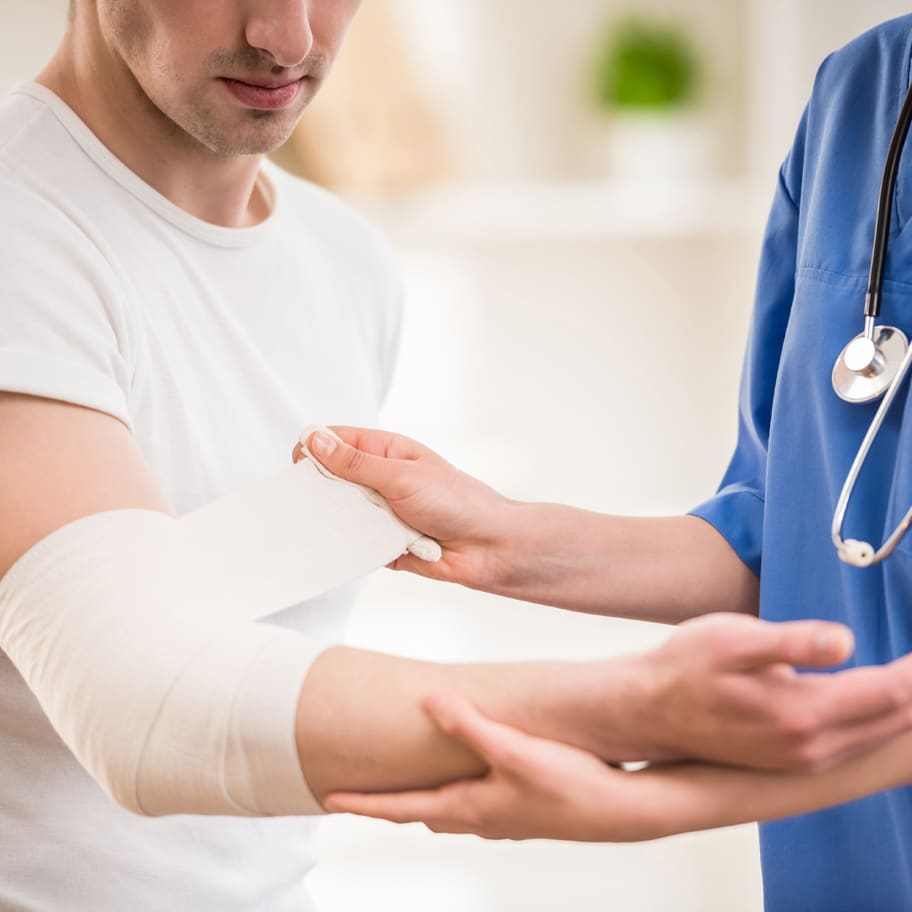Hand Parts Prone To Injury
Injuries to the arm or hand can affect a persons’ ability to work and perform their daily routines. An injury can range from a strain, stiffness, amputation or fracture.
Bones of Your Hand
The human hand is made up of a number of different bones. Within each finger there are three bones – the proximal, intermediate and distal phalanges. Damage to these can be repaired but it is likely not to recover to the mobility it once had.
Muscles, Tendons and Ligaments
These soft tissues allow your hand to grasp and release. Any damage to them can result in loss of movement which can be permanent.
Nerves of your Hand
The nerves placed inside the hand allow a person to have their sense of touch. If these nerves are damaged the sense of touch can be reduced.
Fingers
Finger injuries can occur in the workplace, slip and fall accidents and in car accidents and usually fall into one of the following categories:
- Lacerations
- Fractures
- Breaks
- Crush Injuries
- Degloving
- Dislocations
- Infections
- Soft Tissue injuries
- Burns
- Amputation
Arm Parts Prone To Injury
Upper Arm
The upper arm consists of the humerus, while the forearm consists of the radius and the ulna. The radius and ulna allow movement of the hand which is critical for the full use of the forearm. The damaging or loss of one of these bones can have a significant impact on a persons’ life.
Elbow
Elbow injuries can be caused by overuse and repetitive motion, leading to a repetitive strain injury. These are common injuries in the workplace for those who work with repetitive tasks each day.
Some of the most common elbow injuries include:
- Tennis Elbow (Lateral Epicondylitis) – elbow pain, specifically the outside of the elbow caused by inflamed tendons.
- Golfers Elbow (Epicondylitis) – elbow pain, specifically on the inside of the elbow caused by inflamed tendons.
- Torn Ulnar Collateral Ligament – elbow pain caused by repetitive strain that affects the medial collateral ligament in the elbow.
Elbow injuries from a slip and fall at work or in a public place may also include:
- Dislocation – when a person slips and falls and their hand takes the impact of the fall, the force of the fall may travel up the arm causing the elbow to dislocate.
- Bicep Tendons Tear (at the elbow)
- Elbow Fracture
- Elbow Bursitis
- Ulnar Nerve Entrapment (at the elbow)
Forearm
Forearm injuries can occur in slip and fall accidents leading to the following complications:
- Breaks and Fractures
- Radius Fracture (Broken Forearm)
- Ulna Fracture
- Ligament and Tendon Damage
- Nerve Damage
Wrist
Wrist injuries may also be caused by repetitive strain in the workplace when working with repetitive tasks, they range from typing at a computer all day to working on an assembly line. It is the employer’s responsibility to ensure that workers are given adequate break/rest periods or given wrist supports were necessary to prevent some of these issues.
Some of the wrist injuries that can occur are:
- Carpal Tunnel Syndrome – compression of the nerve that passes through the wrist.
- Wrist Tendonitis – inflammation of the tendons in the wrist that join the muscles to the bones.
- Wrist Bursitis – inflammation of the small sacks of fluid that are found in the wrist joint.
- Cubital Tunnel Syndrome – pain, paralysis or numbness in the ring or little fingers from overuse.
In slip and fall cases, whether at work or in a public place the following injuries are common:
- Wrist Fractures
- Wrist Sprain
Causes of Arm and Hand Injuries
In the Workplace
A workplace that is not properly maintained or does not have adequate safety measures in place may present the risk of an accident occurring to an employee. Arm and hand injuries usually occur in the workplace because of repetitive strain or slip, trip or fall because of:
In such cases, liability may rest on the employer if it is proven that they did not provide a hazard free working environment.
In a Public Place
In public places, whether it be shops, supermarkets, business premises, public parks, playgrounds or simply walking along a footpath, there is an expectation that the area would be relatively risk and danger free. In cases where the owner/occupier of a public place or business premises failed to uphold their duty of care and not provide a risk-free environment and you can prove that your arm or hand injury could have been avoided if the occupier had taken necessary steps to provide a hazard free environment, then you may be entitled to pursue legal action.
Most common of accidents involving arm and hand injuries in public places have been:
- Slip and fall on a wet floor in a shop/supermarket
- Trip and fall over uneven flooring
- Fall in a stair well because of broken or inadequate handrails
- Tip and fall because of inadequate lighting
- Slip and fall on wet floor/broken glass in a pub or nightclub
- Tripping on a pot hole or poorly maintained footpath
- Accidents in playgrounds and public parks
On the Road
On the road, there are many scenarios whereby a person could experience an arm or hand injury because of another person’s actions/inactions. In these cases where you can prove that your injury could have been avoided if the other party had not acted negligently, you may be entitled to pursue legal action.
Some examples of road traffic accidents involving arm and hand injuries have been:

